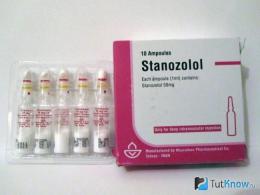The nails of the big toes turn blue. Blue nails
A blue toenail may not always be the result of the mechanical impact of any objects. When a fall, blow or other injury occurs, the finger acquires an unsightly bluish tint, but if a person has not noticed anything like this, he needs to look for another reason for this phenomenon, often together with a doctor.
One of the common causes of blue nail plates is wearing tight, uncomfortable shoes. As a result of constant pressure, blood circulation in the tissues of the finger is disrupted. There is not enough blood flowing into the nail bed, and given that there are quite large vessels in the big toe, this can lead to serious consequences. We are talking about thrombosis and gangrene.
An incorrectly performed, artisanal pedicure can also lead to the above problem. Inaccurate treatment of the cuticle, namely cutting it too much or pushing it back, can lead to damage to the nail fold. Such interference is very dangerous. In the best case, the nail will acquire a blue tint and a wavy structure.
If a woman constantly uses low-quality cosmetics, including those with expired expiration dates, in particular nail polish, nail polish remover, creams and scrubs, she risks damaging the health of her nails. They may not only turn blue or yellow, but also begin to crumble. Work associated with constant contact with chemicals can lead to the same consequences. Workers in such industries usually have brittle nails, and in severe cases, even bleeding develops.
Another common cause of toenail damage is fungus. The disease is accompanied by severe itching and burning, the nail plates become deformed and thicken, and subsequently acquire a bluish tint, peel and break. In this case, only a dermatologist can help. You should also consult a specialist if your nail turns blue for no apparent reason. This may be a sign of congestive heart failure. Small vessels swell and blood stagnates in the veins. As a result, not only the nails, but also the surrounding tissues change color.
Another terrible disease – trophic ulcer – also leads to darkening of nails. It often goes hand in hand with diabetes. Therefore, people who have been observing an increase in their blood glucose levels for a long time, or who have discovered this for the first time during a regular examination, should regularly examine their lower extremities for wounds, cuts, ulcers, etc.
Persons exposed to frostbite may encounter the above problem. Turning your toenails blue when exposed to extreme cold for a long time is normal. Moreover, the legs are more sensitive to cold and slower blood circulation than the arms. First aid to such victims must be provided immediately. The feet should be placed in a basin in warm, but not hot, water and seek medical help.
Hello!
I recently discovered that my left big toenail has turned blue. I know for sure that I didn’t hit him. I don’t know what to do: sign up for medical treatment or are there any other ways to return the nail to its normal appearance? I read on the Internet that it is necessary to establish the cause of the blueness. But who can do this? I realized that this happens to many people. maybe it's a matter of age? I am 56 years old.
Sincerely
Valentina Goncharenko
The impact may not be significant - you could simply trip. Also, subungual hematomas (the most likely diagnosis) occur after wearing tight shoes.
Conditions of this kind more often develop after 50, since by this age in women the support of the vascular wall by estrogen decreases and hematomas appear for the most insignificant reasons.
Increased fragility of blood vessels may indicate a hormonal imbalance. In particular, this often happens at the onset of diabetes, when due to constant fluctuations in sugar levels, the strength of the cell walls of small vessels decreases.
Diseases that manifest themselves in a similar way
- Nevus (pigment spot) of the nail bed is a benign formation, there is a risk of malignancy;
- Longitudinal melanonychia - merging pigmented stripes. May appear due to metabolic disorders;
- Subungual melanoma - in addition to the darkened nail (wide stripe), the color of the nail fold changes. Requires immediate surgical treatment.
What to do
Worrying is harmful - see a polyclinic surgeon to diagnose the condition.
As a rule, the hematoma moves along with the nail plate and gradually disappears. If the bleeding continues (this is about the situation with tight shoes), then the color of the nail will not change.
If there is no throbbing pain (progressive hematoma), wait until the spot goes away naturally. When discomfort increases and throbbing pain appears, part of the nail is removed, which immediately alleviates the condition (option: a small hole is drilled).
It's no secret that the nails of our limbs should have a pink color, a shiny and smooth surface of the nail plate. Any deviations from the norm are a signal that there is no longer order here.
Toenails may turn yellow, grow into the skin of the toe, turn green or blue. In any case, this is a problem that needs to be dealt with. In some cases, everything can be fixed at home, and sometimes it is impossible to do without the help of specialists or doctors.
There are many reasons for a blue nail. Let's look at a couple of the most common cases.
The most common and well-known is a bruise or injury. In this case, a darker nail indicates that a hematoma has appeared under the nail. In such cases, you can be treated at home, but if pain occurs, immediately consult a doctor for help.
The second most common infection is a fungal or viral infection. In this case, you need to consult a doctor. Without his consultation, it will be very difficult to choose the right drug treatment.
Blue nails can also occur when wearing uncomfortable shoes. In most cases, this happens to athletes, since they wear uniforms that are not always comfortable for a long time.
With great and constant physical activity, mini blisters may form under the nails. They provoke the appearance of bloody spots under the nail plate. You can’t hesitate here and you need to see a doctor.
There is also a terrible reason for the appearance of blue under the nail - the melanoma virus. In other words, a malignant tumor that appears as dark spots.
Clinical picture – blue color of toenails
Like every disease, a blue nail has its own symptoms:
- the nail changes its color from pink to dark blue, sometimes black;
- aching pain, which can be constant or appear only when walking and other types of activity;
- unpleasant odor from feet;
- sometimes there is a different color and viscosity of fluid discharge from under the nail plate;
- temporary swelling of the sore finger;
- rarely, separation of the nail plate from the bed.
If the nail has already turned blue due to minor injury, then you can do without medical intervention. It is better to leave the nail alone and it will rehabilitate itself. If it seems that the problem is much more serious, then you should consult an orthopedist. He will already prescribe treatment. It is possible that the nail will have to be removed, the soft tissues washed and disinfected. Apply stitches only if necessary. Later the nail will grow back on its own. Sometimes the doctor may prescribe baths and medications in the form of tablets that help resolve hematomas.
If there is no pain or unpleasant odors, you can disinfect every evening and not seek medical help at the hospital. For infectious diseases, the doctor independently prescribes an antibiotic.
If the injury is serious, then you need to urgently go to the hospital. The doctor will prescribe treatment and perform surgery to remove the nail plate. He will most likely schedule appointments in his office every 3 days.
To summarize, if you receive any injury, it is advisable to seek advice from a doctor, who will make the right decision and give a recommendation.

Preventive measures
- The most important condition is to trim your nails correctly.
- Follow the rules of cleanliness.
- Wear only shoes in which the foot feels comfortable and does not squeeze the toes.
- Make sure your feet are always washed and dry.
- Wear only clean underwear.
- Make sure your shoes are clean and dry.
- Doctors recommend airing your shoes before putting them on.
- Strictly monitor the health of the nail.
- Solve all problems immediately, without putting them aside.
- After all, timely therapy will help rehabilitate the color and structure of the nail plate and cure the existing disease.
Conclusion!
Now you know what to do when you have a blue toenail. Take care of your health! Everyone has one and no one will give or give another for a birthday. Follow the advice of experts.
To comply with them does not require much expenditure, both financial and physical. Therefore, there are no obstacles that can stop anyone from the goal to which a healthy person is heading!
I wish you happiness and peace of mind!
Video about nail injuries
Video about changing nail color
You shouldn't take your fingernails or toenails lightly. Sometimes a change in their condition - shape, color, structure - can indicate serious disturbances in the functioning of the human body. By monitoring the “indicators” of health, you can identify and prevent many ailments at the initial stage of their development. And the most characteristic and frequently encountered signal is the blueness of the toenails. Let’s try to figure out why this is happening and what it threatens.
"Harmless" culprits
There can be a variety of reasons why your toenails turn blue. Some of them are symptoms of serious pathological changes in the body, while others do not pose a serious health hazard.
The most common reason that toenails turn blue is mechanical damage. As a result of a slight impact, the vessels under the plate burst, and an ordinary one is formed. The little finger and thumbnails are most often affected. Their edge location increases the risk of accidental impact.
Immediately after an injury, the entire space under the plate turns blue, and the fingers themselves hurt. But after a certain time, the hematoma takes on a clearly defined shape, usually a dark blue spot. In some cases, colors can vary from pink to dark brown and even black. It all depends on the intensity of the damaging effect.
Another harmless reason for a nail turning blue is the overuse or use of low-quality varnishes during pedicures. Coloring pigments penetrate the structure of the plate and change its color.
The presented causes are harmless to the body, as they are not symptoms of complex diseases. The hematoma spot will resolve itself over time. And only if this does not happen over a long period, then you should consult a doctor. Usually, to eliminate the blue spot, the nail is cut off and filed.
Mycosis of the nail
Fungal infection is a fairly common ailment that can affect a person at any age. It is difficult to combat, and the situation is aggravated by the fact that detection of fungal spores is delayed.
If you don't remember hitting yourself recently and your toenail turning blue, there's cause for concern.

In addition to the bluish color, other symptoms will appear on the finger:
- redness of the skin ridges around the plate, peeling of the skin and itching;
- change in the shape of the stratum corneum;
- the nail changes its thickness up or down;
- the plates of the legs become fragile and brittle.
The combination of these signs on several toenails gives serious cause for concern. In such cases, it is imperative to consult a specialist - a mycologist or dermatologist. Anyone can contract fungal spores, but there are certain groups that are most susceptible to infection:
- Children, teenagers and elderly people.
- People with reduced immunity levels.
- Family members of the patient, because they are in direct contact with him.
- Women during pregnancy and breastfeeding.
The risk of infecting your feet with a fungal infection increases when visiting public places - swimming pools, gyms, solariums, saunas. Moreover, the spore can be picked up by the hands, and only then transferred to the feet when putting on shoes. Therefore, take care of the hygiene of your hands and feet.
Communication with internal organs
Very often, nails turn blue due to impaired or insufficient blood circulation in the tissues. In this case, the stain has a mild character, and the tips of the fingers also become bluish. In this case, you should immediately consult a doctor, because such manifestations may be a signal of chronic illnesses.
The reason for this may be diseases of the internal organs. If liver function is impaired, a blue spot appears closer to the base of the nail. This suggests that there are many toxic compounds in the body that should have been retained by the liver.

Heart failure is also a common reason why the nail takes on a bluish tint. It is worth paying attention to the change in color of the fingertip.
If a bluish tint appears fairly quickly, then the disease is severe and requires immediate intervention from a doctor.
Blockage of blood vessels in the limb may also be the reason why the nail has acquired a bluish tint. In this case, oxygen supply to the tissues is disrupted, which creates the risk of gangrene.
Other reasons
Less common reasons that lead to discoloration of the nail are poorly performed cosmetic procedures. Improper treatment of the cuticle and skin ridges during pedicure, as well as the use of low-quality cosmetics, leads to the fact that the nail turns blue.
The appearance of burrs and their improper processing is the reason why a blue tint appears on the plate. In addition, wounds left by hangnails can “attract” infection.
A third, less common source is improperly selected shoes. Pressure from boots or shoes leads to compression of the blood vessels, which is why the nails turn blue. This effect is aggravated when a person leads an active lifestyle, walks and moves a lot.
There are many reasons for changes in the color of the nail plate. It is worth analyzing your lifestyle, thinking about your state of health and consulting a doctor for help in determining the source of pathological changes.
The nail plates on your hands can “tell” an experienced doctor everything about your state of health. Any changes in shape, the appearance of inclusions, depressions or stripes on them indicate the presence of various infectious and inflammatory processes in the body. But what can blue fingernails indicate?
Possible causes of the problem
Most often associated with various injuries. A blow or bruise provokes the formation of a hematoma under the nail plate, which leads to the appearance of a bluish tint. If the blueness of the nail plates occurs only after exposure to cold temperatures on the hands or feet, then there is no need to worry. In this case, a narrowing of blood vessels occurs, which leads to the appearance of a bluish color of the nail plates. This phenomenon is temporary and disappears as soon as the body temperature returns to normal.
However, if you have not suffered hand injuries in the near future, then blueing of the nail plate may occur due to impaired blood flow in the fingers. This phenomenon is quite often provoked by pathological processes in the organs of the respiratory and cardiovascular systems, the occurrence of atherosclerotic plaques, as well as metabolic disorders, which are often observed with the development of diabetes mellitus.
But if it does not disappear for several days or weeks, then this is a serious reason to consult a cardiologist. Since in this case such a symptom may indicate a dysfunction of the cardiovascular system. You will need to have an ECG done to determine whether you have heart problems or not.
All these pathologies lead to damage to small vessels, which results in blue discoloration of fingernails. If there are disruptions in metabolic processes in the body, then in addition to this symptom, a person may also experience fragility of the nail plates and dry skin around them. It is also possible for hangnails to appear, which cause severe discomfort to the person.
If you notice not only nails, but also fingers, then this indicates a circulatory disorder. The consequences of such violations can be tragic, and therefore you should immediately consult a doctor.
Blue colored nails may also indicate the development of fungal infections. In this case, in addition to changes in the color of the nail plates, their deformation and destruction are observed. Itching and burning may also occur. Treatment of the infection should be carried out with the help of special medications, which will be prescribed by the doctor after confirming the diagnosis.
It is also worth noting that blue discoloration of the nail plates can be observed after taking certain medications that affect the blood circulation in the body.
Remember that on the hands is only a symptom of some disorders in the body. Therefore, first you should find out your level of health and eliminate all pathological processes. Only after this will you be able to return your nails to an attractive and healthy appearance.
And to do this, you need to see a doctor and undergo a series of medical examinations to determine the exact cause of this disease.
How to eliminate blue tint on fingernails
If you have a nail injury, you should immediately apply a cold compress to it. It will not only reduce pain, but also prevent the appearance of a blue tint on the nail plate.
If the nail still turns blue, you need to consult a surgeon. He will conduct a thorough examination of the injured finger and prescribe appropriate treatment for you. In some cases, a procedure to remove the nail plate may even be required. There is no need to be afraid of her. Although it is painful, it will quickly relieve you of your problem. In addition, a new healthy nail will soon form at the site where the nail plate was removed.
If a bluish color of the nails appears on all fingers at once, then you need to go to a therapist, or even better, to a cardiologist, since such a symptom already indicates the presence of pathologies that need urgent treatment. Once you complete the therapeutic course of treatment, your nail color should normalize on its own.
If no pathologies have been identified and you have not received any injuries that could lead to a change in the color of your nails, then, most likely, the blue tint of the nail plates appeared as a result of a violation of local blood circulation.
To correct the situation, you can use some traditional medicine that is aimed at improving the flow and flow of blood to the fingers.

- Hand baths with no sea salt only stimulate blood circulation, but And contribute to strengthening and nutrition of the nails themselves, in as a result, they begin to grow better and acquire a natural beautiful color. It's easy to prepare a bath- needed in stir in a small amount of warm water 1 tsp sea salt and hold your hands in the resulting solution is about 15 minutes.
- A contrast shower helps improve local blood circulation and strengthening the walls of blood vessels. It's very easy to do at home - first direct a stream of cold water to nails, wait a couple of minutes, and then turn on the hot water quickly. AND so alternately change the water temperature by for 10-15 minutes.
- Massage with using lavender essential oil also has a beneficial effect on blood circulation and helps strengthen nails. Place a couple of drops of oil on nail and start rubbing it until it is completely will be absorbed.
- Blue The dark shade of the nail plates can be eliminated with the help of regular lemon, which has whitening properties. To do this, you just need to cut the fruit in half and process it all nail plates. Through 20-30 minutes, hands or feet should be rinsed warm water and lubricate with nourishing cream, as lemon juice may get on skin, which will lead to its dryness and flaking.
Also worth:
- on time to stop treatment application of varnishes and liquids for them withdrawals;
- replenish vitamins and minerals in body (for this you can start taking vitamin complexes);
- pre prevent the influence of cold temperatures on nail plates (not wash your hands in cold water, not in winter go out to street without gloves and etc.).
We have already found out why fingernails turn blue and how to deal with this problem. However, remember that we are talking about your health here. Therefore, it is better not to experiment, but seek help from a qualified specialist.






